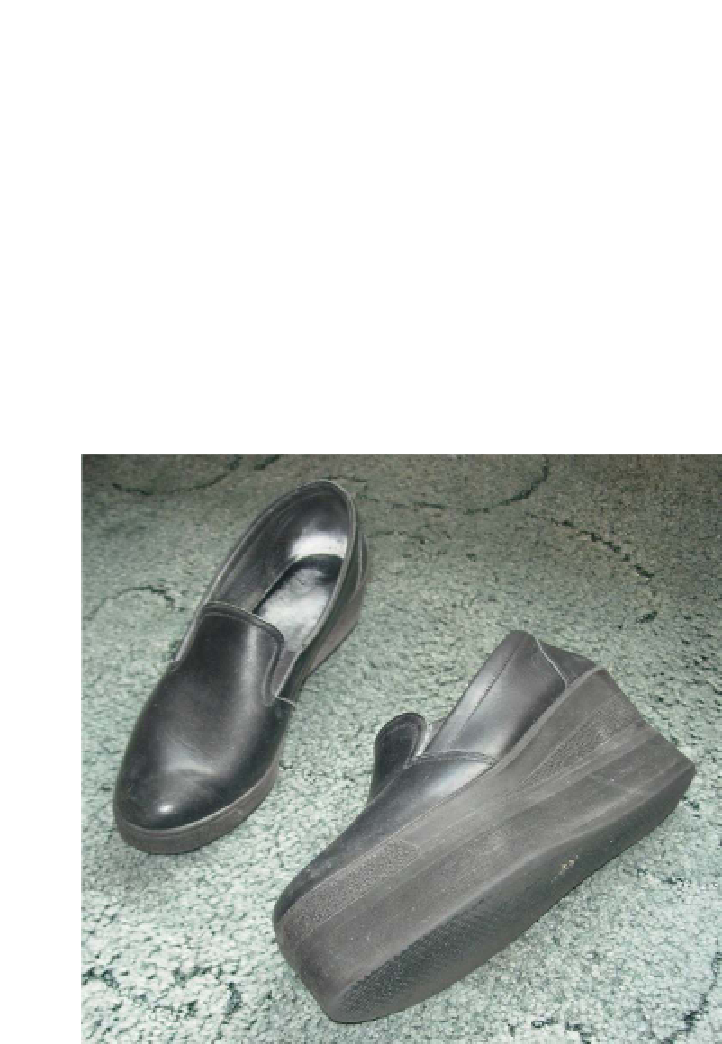what-when-how
In Depth Tutorials and Information
7
sole and heel height of the shoe with the appropriate materials and by
the required amount. When requesting an elevation adaptation, the actual
height of the raise should be given and should not include the normal sole
and heel heights. The external elevation can be either inserted into the
existing sole or heel, or added beneath the existing sole/heel (
Figure 7.7
).
An internal elevation can be no more than 1.5 mm otherwise the foot
will slide out of the footwear and there will be problems with forefoot and
midfoot it. The raise will be less than the difference in leg length and it
should be tapered towards the toe end to facilitate roll through, and
measured at midheel, MTP joints and toe end. Often the difference at
these three points is reduced by half, for example 12 mm - 6 mm - 3 mm.
A tapered raise takes into account 1.5 cm take off allowance to aid gait
through the swing phase.
The outer raise can be made from microcellular rubber, cork or high-
density Plastazote. The base of the heel needs to be broad for stability,
and the higher the raise the broader the heel needs to be.
Figure 7.7
Outer sole heel raise















































